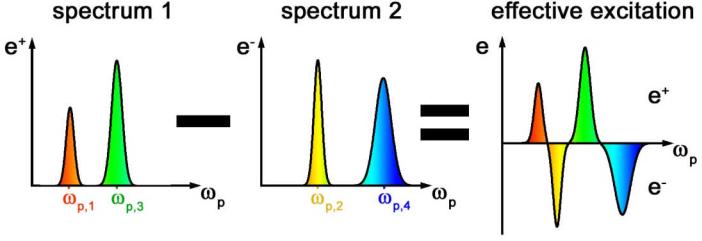Fig. 3. Spectral modulation scheme.
While spectrally tailored excitation allows to target which vibrational resonance is excited, it does not directly improve chemical specificity compared to narrowband excitation because there is no mechanism to suppress signal from overlapping bands of interfering species. In STE-SRS, we therefore shape the broadband pump spectrum twice: The first spectrum e+(ωp) mainly contain spectral components resonant with target species (Ω1 and Ω3). The second spectrum e–(ωp) mainly contain spectral components resonant with target species (Ω2 and Ω4) and is weighted to cancel out the interfering signal generated by e+(ωp). The difference SRS signal from e+(ωp) and e–(ωp) can thus be freed from all interfering contribution. For simplicity the two spectra can be combined into one effective excitation mask e(ωp) = e+(ωp) – e–(ωp). Such subtraction can be implemented for real-time imaging by modulating between the two excitation spectra at high frequency and extracting the resulting modulation transfer with lock-in amplifier.

